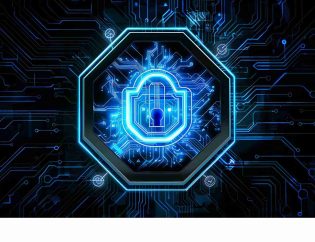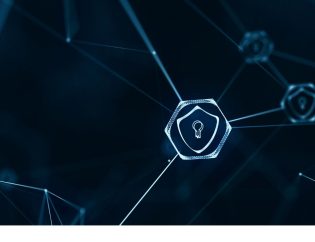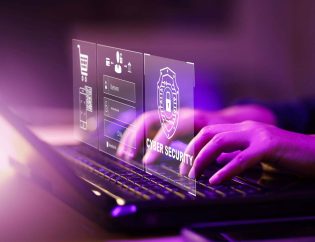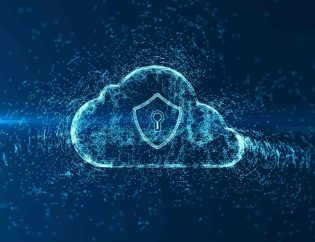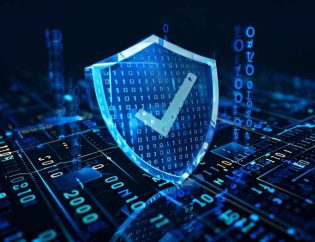Why Businesses Need Cybersecurity Tools in 2025
Cybersecurity threats are evolving at an unprecedented pace, with attackers leveraging AI and sophisticated malware to exploit vulnerabilities. Businesses that lack robust cyber tools face risks including data breaches, operational downtime and reputational damage. Investing in the best cybersecurity tools enables companies to proactively address threats and ensure compliance with industry standards.
Top 10 Cybersecurity Tools Every Business Needs in 2025
1. Antivirus and Endpoint Security
Antivirus tools protect endpoints from malware, ransomware, and spyware. They ensure critical devices are secure, provide real-time scanning, and form the first line of defense against evolving threats, keeping business operations safe and uninterrupted.
2. Firewalls
Firewalls act as a barrier, filtering traffic to protect internal systems from unauthorized access. They enhance network security by monitoring activity, preventing intrusion, and ensuring smooth business operations through effective control of inbound and outbound connections.
3. Email Security
Email security tools protect businesses from phishing, spam, and malware. They ensure secure communication by encrypting emails, blocking malicious links or attachments, and providing advanced filtering to safeguard sensitive information shared via email systems.
4. Encryption Tools
Encryption tools safeguard sensitive data by converting it into unreadable formats for unauthorized users. They ensure security for data at rest or in transit, helping businesses protect confidential information and maintain regulatory compliance.
5. Security Information and Event Management (SIEM)
SIEM platforms collect and analyze security data from various sources, offering centralized visibility. They automate threat detection, aid in compliance, and enable rapid response, ensuring a business’s cybersecurity posture remains strong and efficient.
6. Cloud Security Tools
Cloud security tools protect data, applications, and infrastructure in cloud environments. They mitigate risks like unauthorized access or misconfigurations, enabling businesses to leverage cloud technologies securely and efficiently for operational success.
7. Identity and Access Management (IAM)
IAM systems manage user identities and control access to sensitive resources. They implement zero-trust policies, ensuring only authorized personnel access critical data, and enhance overall security by preventing insider threats or unauthorized breaches.
8. Network Monitoring Tools
Network monitoring tools provide continuous oversight of network performance and detect anomalies. They allow businesses to identify vulnerabilities proactively, enhance operational reliability, and maintain a secure and stable infrastructure.
9. Penetration Testing Tools
Penetration testing tools simulate cyberattacks to identify weaknesses in systems. They provide valuable insights for fortifying defenses, ensuring vulnerabilities are addressed before attackers can exploit them, and helping businesses build robust security frameworks.
10. Backup and Recovery Solutions
Backup and recovery tools secure critical business data, ensuring availability during cyber incidents or disasters. They enable swift data restoration, minimize downtime, and support business continuity by protecting against data loss.
Benefits of Cybersecurity Tools
Enhanced Data Security
Cybersecurity tools protect sensitive information by preventing unauthorized access, data breaches and theft. Encryption software and endpoint security create layers of defense for business-critical assets.
Regulatory Compliance
Adhering to laws like GDPR and HIPAA is easier with tools like SIEM, which monitor and document security practices, avoiding fines and enhancing stakeholder trust.
Improved Business Continuity
Backup and recovery solutions safeguard critical data, enabling rapid recovery during disruptions. Proactive defenses prevent cyberattacks from escalating, minimizing downtime and operational losses.
Customer Trust
Robust cybersecurity tools demonstrate a commitment to protecting customer data, building trust, retaining clients and attracting new business by ensuring secure, reliable digital interactions.
Operational Efficiency
Automation in tools like SIEM streamlines threat detection and reduces false positives, enabling IT teams to focus on significant vulnerabilities and improve overall productivity.
Cost Savings
Preventing data breaches and minimizing recovery time reduces financial losses. Investing in cybersecurity tools saves businesses significant costs associated with attacks and legal penalties.
Competitive Advantage
A strong cybersecurity framework attracts clients and enhances brand reputation. Certification and robust defenses differentiate businesses in sectors like finance, healthcare and e-commerce.
Proactive Threat Management
Tools like threat intelligence platforms identify vulnerabilities, enabling businesses to strengthen defenses and address potential threats proactively, rather than reacting after an incident occurs.
"Protect your business in 2025 with the best cybersecurity tools. From antivirus to email security, ensure data protection, secure networks and prevent threats with advanced solutions. #Cybersecurity #Tech2025"
— Hyper Secure (@HyperSecure) December 7, 2024
Comparative Table of Top Cybersecurity Tools
| Tool | Category | Primary Use | Popular Solutions |
|---|---|---|---|
| Antivirus | Endpoint Security | Protects against malware, ransomware, and spyware | Hyper Secure, Norton, McAfee |
| Firewalls | Network Security | Monitors and controls incoming/outgoing traffic | Hyper Secure, Cisco ASA, Fortinet |
| SIEM | Event Management | Centralized monitoring and threat detection | Hyper Secure, Splunk, LogRhythm |
| Encryption Tools | Data Security | Encrypts data to prevent unauthorized access | Hyper Secure, VeraCrypt, AxCrypt |
| Cloud Security | Cloud Protection | Secures cloud environments and mitigates threats | Hyper Secure, Zscaler, Prisma Cloud |
Customer Testimonial
“Implementing these cybersecurity tools has transformed our business. Threats that previously went unnoticed are now detected and addressed in real-time. Investing in advanced solutions like SIEM and encryption has given us peace of mind.”
– Sophia R., IT Manager at SecureNet
FAQs
1. What are cybersecurity tools?
Cybersecurity tools are solutions designed to protect networks, systems and data from cyber threats, ensuring business continuity.
2. Why are cybersecurity tools important?
They mitigate risks such as data breaches, malware attacks and compliance violations, safeguarding sensitive information.
3. What is the best cybersecurity tool for small businesses?
For small businesses, a combination of endpoint security tools like Norton and cloud security solutions like Zscaler is ideal.
4. How does SIEM software help businesses?
SIEM tools collect and analyze security alerts, offering centralized visibility and automating threat detection and response.
5. Can free cybersecurity tools provide adequate protection?
While free tools offer basic protection, comprehensive security often requires investment in premium solutions.
Conclusion
With the right cyber tools, businesses can confidently navigate the increasingly complex threat landscape of 2025. At Hyper Secure, a leading Cybersecurity Services Company, we specialize in providing the best cybersecurity tools and tailored solutions to meet your unique business needs. Our cutting-edge technologies and expert guidance ensure your organization stays protected from emerging cyber threats. Secure your business with our advanced cybersecurity solutions and enjoy peace of mind knowing your data and operations are safe.
